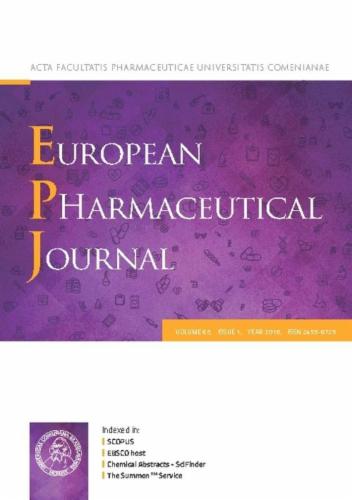Characterization of digital camera-based UV illumination fluorescent imaging for concentration measurement with limit of detection, specificity and precision
IF 4.3
3区 医学
Q1 PHARMACOLOGY & PHARMACY
引用次数: 0
Abstract
Nowadays the increased need for pharmaceutics requires fast, cheap and reliable quality control systems to investigate the final product’s quality. The generally used methods like high-pressure liquid chromatography (HPLC) and other coupled techniques are not just time-consuming but also expensive and often destructive. To facilitate real-time measurement of active ingredient concentration, an alternative non-destructive machine vision and artificial intelligence-based system was tested, that implements ultraviolet (UV) illumination. With this technique the concentration of the active pharmaceutical ingredient containing fluorophore groups can be studied due to the different light emission of the different active pharmaceutical ingredient concentrations. However, to facilitate the practical application of this novel non-destructive and system, it is essential to determine its limit of detection (LoD) and limit of quantification (LoQ). In this study we aimed to study the LoD and LoQ of UV illumination fluorescent imaging of tablets using levofloxacin as the active pharmaceutical ingredient. We also execute intermediate precision and specificity studies to gather more information about the reliability of this novel technique.

基于数码相机的紫外荧光成像浓度测量的检测限、特异性和精度表征
如今,对药品的需求不断增加,需要快速、廉价和可靠的质量控制系统来调查最终产品的质量。常用的方法如高压液相色谱法(HPLC)和其他耦合技术不仅耗时,而且昂贵,而且往往具有破坏性。为了便于实时测量活性成分浓度,测试了一种非破坏性机器视觉和基于人工智能的替代系统,该系统实现了紫外线(UV)照明。利用该技术,可以研究含有荧光基团的活性药物成分的浓度,因为不同的活性药物成分浓度的光发射不同。然而,为了便于这种新型无损检测系统的实际应用,有必要确定其检测限(LoD)和定量限(LoQ)。本研究旨在研究以左氧氟沙星为活性成分的片剂紫外荧光成像的LoD和LoQ。我们还进行了中间精度和特异性研究,以收集有关这种新技术可靠性的更多信息。
本文章由计算机程序翻译,如有差异,请以英文原文为准。
求助全文
约1分钟内获得全文
求助全文
来源期刊
CiteScore
9.60
自引率
2.20%
发文量
248
审稿时长
50 days
期刊介绍:
The journal publishes research articles, review articles and scientific commentaries on all aspects of the pharmaceutical sciences with emphasis on conceptual novelty and scientific quality. The Editors welcome articles in this multidisciplinary field, with a focus on topics relevant for drug discovery and development.
More specifically, the Journal publishes reports on medicinal chemistry, pharmacology, drug absorption and metabolism, pharmacokinetics and pharmacodynamics, pharmaceutical and biomedical analysis, drug delivery (including gene delivery), drug targeting, pharmaceutical technology, pharmaceutical biotechnology and clinical drug evaluation. The journal will typically not give priority to manuscripts focusing primarily on organic synthesis, natural products, adaptation of analytical approaches, or discussions pertaining to drug policy making.
Scientific commentaries and review articles are generally by invitation only or by consent of the Editors. Proceedings of scientific meetings may be published as special issues or supplements to the Journal.

 求助内容:
求助内容: 应助结果提醒方式:
应助结果提醒方式:


